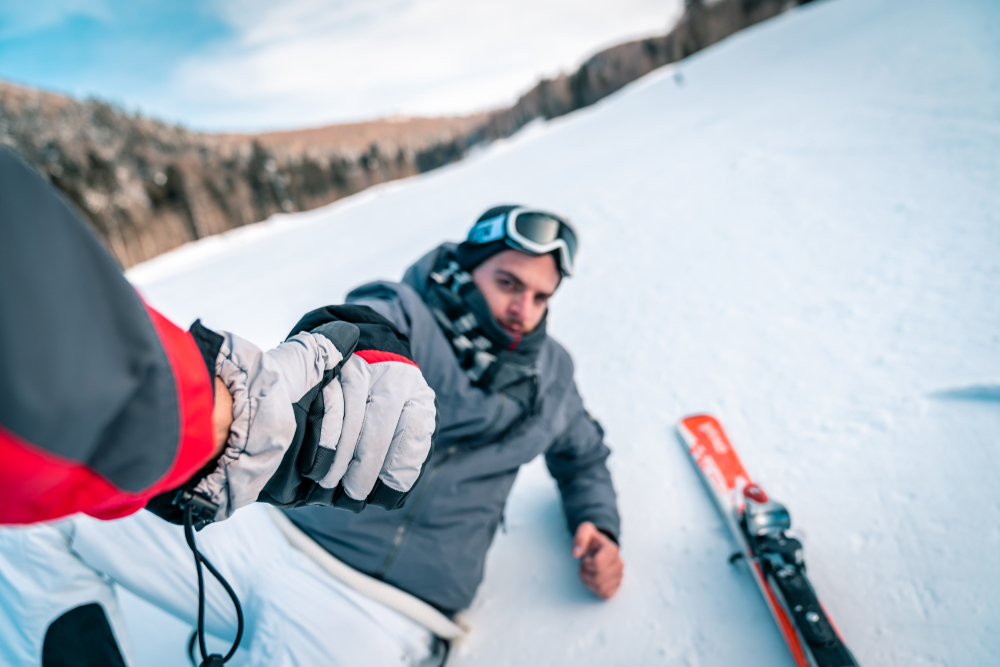Are you planning your next holiday stay at luxury catered ski chalet val thorens? Skiing is an exhilarating winter sport that combines speed, skill, and a sense of adventure. Whether you’re a seasoned skier or a beginner, staying safe on the slopes is essential for ensuring an enjoyable experience. Accidents can happen, but with the right precautions, you can minimise risks and make the most of your time on the mountain. In this guide, we’ll cover key skiing safety tips to help you navigate the slopes confidently and stay injury-free.
1. Know Your Limits
One of the most important skiing safety tips is understanding your skill level and sticking to slopes that match your abilities. Ski resorts categorise ski slope runs by difficulty, often marked by colour codes: green for beginners, blue for intermediates, and black for advanced skiers. Attempting runs beyond your comfort zone increases the likelihood of accidents. As you gain experience, challenge yourself gradually, but always be realistic about your skills.
2. Use Proper Gear
Wearing the right ski gear is crucial for both performance and safety. Here’s a checklist of essential gear to keep you protected:
- Helmet: A well-fitted helmet can prevent head injuries in case of a fall or collision. Always wear one, no matter your skill level.
- Goggles: Skiing goggles protect your eyes from UV rays, snow, wind, and glare. Choose goggles with good visibility and UV protection.
- Layers: Dress in layers to stay warm and dry. A moisture-wicking base layer, insulating mid-layer, and waterproof outer layer will help you maintain your body temperature.
- Gloves and Socks: Insulated, waterproof gloves and wool or synthetic socks will keep your extremities warm, preventing frostbite.
- Bindings: Ensure your ski bindings are correctly adjusted to your weight and skill level to minimise the risk of injury in case of a fall.
3. Warm Up and Stretch
Skiing is physically demanding, and hitting the slopes without warming up can put you at risk for muscle strains or joint injuries. Before skiing, do some light cardio and dynamic stretches to increase blood flow to your muscles. Focus on leg stretches, as your thighs and calves do most of the work. After skiing, stretching can help reduce soreness and prevent stiffness.
4. Follow the Skier’s Code of Conduct
Most ski resorts operate under a set of safety rules called the Skier’s Responsibility Code. Familiarising yourself with these rules will help you stay safe and avoid conflicts with other skiers. Key points include:
- Yield to others: Skiers ahead of you have the right of way. Always be aware of your surroundings and avoid cutting others off.
- Control your speed: Always ski at a speed appropriate for your ability and the current conditions.
- Stop in safe places: Only stop on the side of the trail, not in the middle of runs or in blind spots where others may not see you.
- Observe signage: Pay attention to signs, warnings, and closed trails to avoid hazardous areas.
5. Stay Hydrated and Take Breaks
Cold weather can make it easy to forget to drink water, but dehydration can lead to fatigue and slower reaction times, both of which increase your risk of injury. Bring a water bottle or hydration pack and take regular sips throughout the day. In addition, listen to your body. Skiing can be tiring, especially at high altitudes, so take breaks when you need them. Overexertion can lead to mistakes and falls, so it’s better to pace yourself.
6. Be Aware of Weather and Snow Conditions
Weather and snow conditions can dramatically impact your skiing experience. Check the weather forecast before heading out, and be prepared for sudden changes, as mountain weather can be unpredictable. Fresh powder, icy patches, and foggy conditions all require different approaches, so adjust your skiing technique accordingly.
- Powder: In deep powder, maintain balance by leaning slightly back to keep the tips of your skis up.
- Ice: On icy slopes, stay low, use your edges, and control your speed to avoid sliding.
- Fog: When visibility is low, ski cautiously, stay close to the sides of the run, and follow trail markers to avoid getting lost.
7. Take a Lesson if You’re a Beginner
If you’re new to skiing or haven’t skied in a while, taking a lesson from a certified instructor is one of the best investments you can make in your safety. Instructors can teach you proper techniques for stopping, turning, and controlling your speed, which are critical for avoiding falls and collisions. A good instructor will also introduce you to basic mountain safety and etiquette, ensuring you feel confident and prepared on the slopes.
8. Ski with a Buddy
Whenever possible, ski with a friend or in a group. Not only is skiing more fun with company, but it’s also safer. If you get injured or lost, having someone with you means help is readily available. If you’re skiing solo, make sure someone knows your planned routes and check in regularly. Consider carrying a whistle or a phone for emergencies, as some areas may have spotty cell service.
9. Be Avalanche Aware
If you’re venturing into the backcountry or off-piste areas, knowing avalanche safety is essential. Avalanches can be triggered by weather conditions, terrain, or human activity, so it’s important to understand the risks and take the necessary precautions. Always check avalanche reports and carry safety equipment, such as an avalanche beacon, shovel, and probe. If you’re inexperienced, consider taking an avalanche safety course before skiing off-piste.
10. Know When to Call It a Day
One of the most common causes of skiing injuries is fatigue. After several hours on the slopes, your muscles tire, and your reaction times slow down, increasing the risk of accidents. It’s essential to listen to your body and know when to stop. If you’re feeling exhausted or notice your form deteriorating, it’s better to head back to the lodge and rest rather than push yourself and risk injury.
Conclusion
Staying safe on the slopes involves preparation, awareness, and smart decision-making. By knowing your limits, wearing the right gear, and following safety guidelines, you can greatly reduce the risk of accidents and enjoy a fun, injury-free skiing experience. Whether you’re a beginner or a seasoned pro, keeping these skiing safety tips in mind will help you make the most of your time on the mountain. Stay safe and happy skiing!







